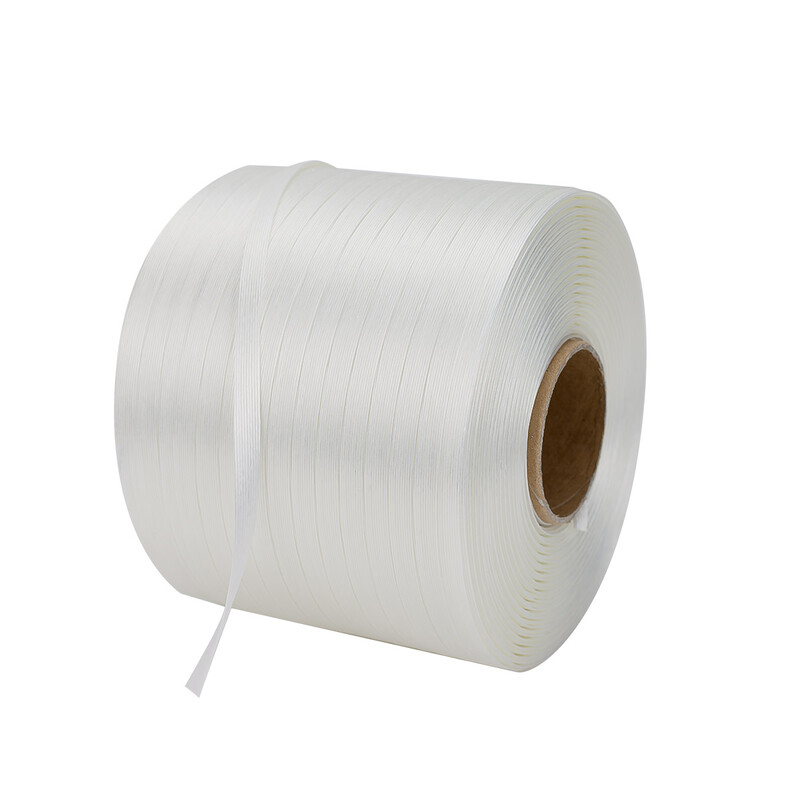Bonded strapping has long been recognized as an essential tool in various industries, providing a safe and cost-effective solution for bundling and securing a wide range of items. As businesses continually seek reliable and economical methods to ensure the integrity of their products during storage and transportation, bonded strapping stands out as a preferred choice. Its combination of strength, flexibility, and affordability makes it an indispensable asset in sectors such as logistics, manufacturing, agriculture, and more.


#### What Is Bonded Strapping?
Bonded strapping, often made from materials like polyester or polypropylene, consists of multiple layers of fibers that are bonded together to form a strong, durable strap. This process of bonding enhances the strap's tensile strength, allowing it to withstand substantial loads without breaking or stretching. Despite its strength, bonded strapping remains lightweight and easy to handle, making it an ideal solution for various bundling and securing tasks.
#### Key Advantages of Bonded Strapping
**Safety and Security:** One of the primary reasons for the widespread use of bonded strapping is the safety it offers. Unlike steel strapping, which can pose risks of cuts and injuries during handling, bonded strapping is soft and pliable, reducing the risk of injury. Additionally, its flexibility ensures that it conforms to the shape of the items being secured, providing a snug fit without damaging the products.
**Cost-Effectiveness:** In today's competitive market, cost management is crucial for businesses. Bonded strapping offers a low-cost alternative to traditional strapping methods, such as steel strapping. Not only is the material itself more affordable, but its lightweight nature also translates to lower shipping costs. Furthermore, the ease of handling and applying bonded strapping reduces labor costs and increases operational efficiency.
**Durability and Performance:** Despite its economical price point, bonded strapping does not compromise on performance. It is designed to withstand various environmental conditions, including exposure to moisture, UV light, and temperature fluctuations. This makes it a reliable choice for securing items that are stored or transported in challenging environments. Its high elongation capacity also allows it to absorb shocks and impacts during transit, preventing damage to the secured items.
#### Applications Across Industries
**Logistics and Shipping:** The logistics industry relies heavily on bonded strapping for securing packages, pallets, and containers during shipping. Its ability to maintain tension over long periods ensures that items remain tightly bundled, even when subjected to the vibrations and movements associated with transportation. This reduces the risk of damage or loss, ensuring that products reach their destination in optimal condition.
**Manufacturing:** In the manufacturing sector, bonded strapping is used to bundle raw materials, finished products, and machinery parts. Its versatility allows it to secure items of varying sizes and weights, making it a go-to solution for manufacturers looking to streamline their packaging processes. The ease of application also means that bonded strapping can be quickly applied, minimizing downtime in fast-paced production environments.
**Agriculture:** Farmers and agricultural businesses use bonded strapping to bundle crops, hay bales, and other agricultural products. Its resistance to moisture and UV degradation makes it suitable for outdoor use, where it may be exposed to harsh weather conditions. The strapping ensures that bundles remain intact during transport from the field to storage facilities or markets, protecting the quality of the produce.
**Construction:** In the construction industry, bonded strapping is utilized to secure building materials, scaffolding, and other equipment. Its strength and durability make it capable of handling heavy loads, while its flexibility allows it to be used in a variety of applications, from securing large timber beams to bundling smaller items like pipes and cables.

#### The Future of Bonded Strapping
As industries continue to evolve, the demand for cost-effective and reliable strapping solutions like bonded strapping is expected to grow. Innovations in material technology may lead to even stronger and more durable bonded strapping options, further enhancing its value proposition. Additionally, the push for sustainability in packaging and shipping may drive the development of eco-friendly bonded strapping materials that are biodegradable or made from recycled content.
#### Conclusion
Bonded strapping's versatility, safety, and cost-effectiveness have made it a staple across a multitude of industries. From logistics and manufacturing to agriculture and construction, its ability to securely bundle and protect items is unmatched. As businesses look for ways to improve efficiency and reduce costs, bonded strapping will undoubtedly remain a key component of their operations. With ongoing advancements in material science, the future of bonded strapping looks promising, offering even greater benefits to the industries it serves.
Others News
 New Study Reveals Efficiency Gains with Advanced Bonded Strapping Techniques
New Study Reveals Efficiency Gains with Advanced Bonded Strapping Techniques New Advances in Bonded Strapping Systems: Efficiency and Safety Combined
New Advances in Bonded Strapping Systems: Efficiency and Safety Combined Bonded Cord Strapping: Revolutionizing the Packaging Industry with Its Durability and Efficiency
Bonded Cord Strapping: Revolutionizing the Packaging Industry with Its Durability and Efficiency Advancements in Bonded Strapping Technology: Boosting Safety and Convenience in the Logistics Industry
Advancements in Bonded Strapping Technology: Boosting Safety and Convenience in the Logistics Industry